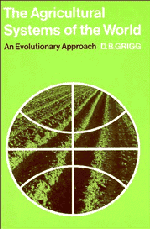Summary
The aim of this book is to describe the chief characteristics of the major agricultural regions of the world and to attempt some explanation of how they came into being. Although there is some description of contemporary features, the emphasis is upon the historical geography of the major farming systems; first, because the author believes that a proper understanding of present geographies cannot be reached without some knowledge of past development; and second, because whilst there is no shortage of contemporary descriptions of the world's major agricultural regions, there have been few attempts to describe their evolution.
But how is the distribution of the major types of agriculture to be explained? There have been many approaches to this problem; some have argued that the distribution is largely a response to variations in the physical environment; others have seen the growth of population and the consequent intensification of farming methods as a major factor differentiating one part of the world from the other, whilst yet others have laid great stress upon the distance that farmers are from their markets. Those who believe that farmers respond readily to changes in prices for products and inputs prefer to see the growth of regional specialisation in starkly economic terms. Nor does this exhaust the list of explanations. But – with a few exceptions – most analyses of the distribution of types of agriculture have been couched largely in contemporary terms, with little reference to the past.
- Type
- Chapter
- Information
- The Agricultural Systems of the WorldAn Evolutionary Approach, pp. 1 - 8Publisher: Cambridge University PressPrint publication year: 1974

